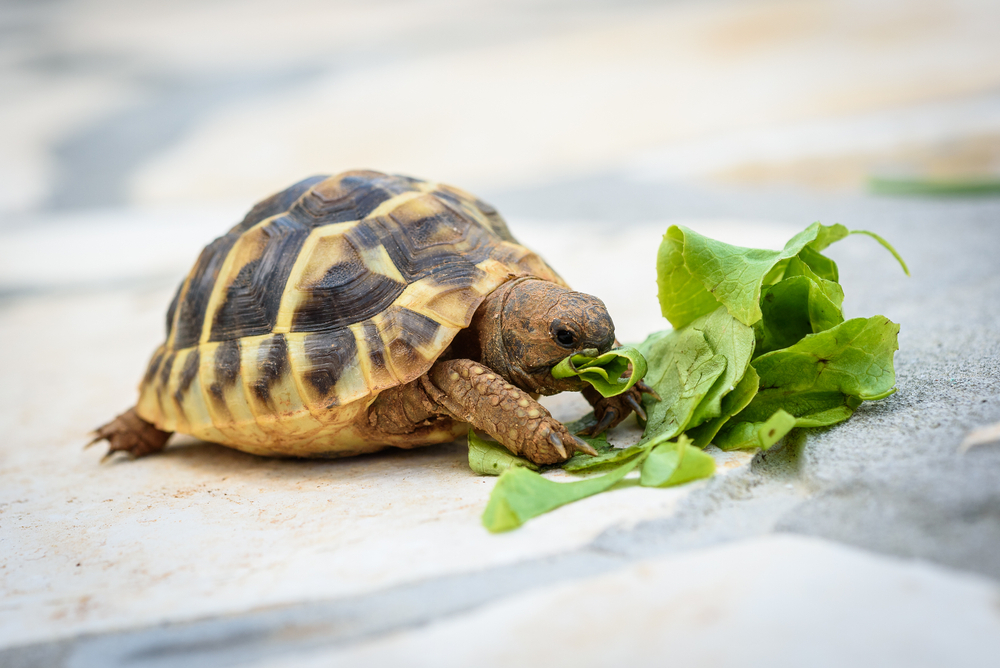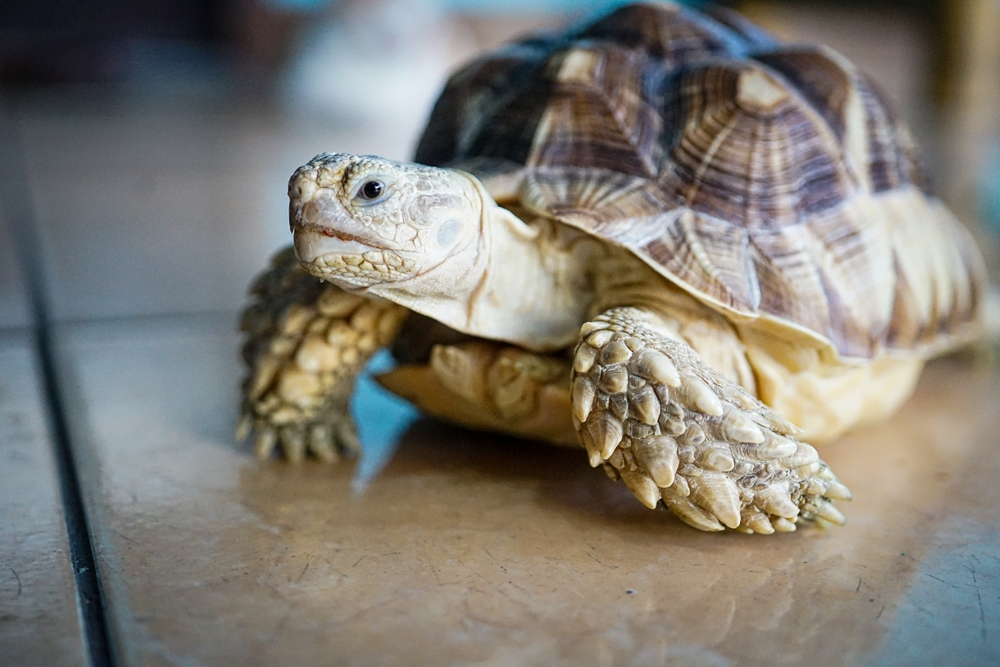Sulcata tortoises, with their kind attitude and long lifespans, have become popular among reptile fans. However, these charismatic giants have special demands, and regular veterinary care is essential for their health and well-being. This blog dives into the field of Sulcata tortoise veterinarian care, providing owners with information to help their shelled pets live long and happy lives.
Understanding The Sulcata Tortoise:
Before we go into veterinary specifics, let’s look at the biology of the Sulcata tortoise. These herbivores, which are native to Africa’s dry regions, are the world’s third-largest tortoise species. They can grow to be three feet long and weigh more than 150 pounds, with lifespans reaching 80 years. This represents a major commitment, and owners must be prepared to meet their tortoise’s long-term demands.
Routine Veterinary Checkups:
Sulcata tortoises, like any pets, require regular veterinary check-ups. Even if your tortoise looks to be in good health, schedule an annual consultation with a veterinarian who specializes in reptile care. These check-ups allow the veterinarian to evaluate your tortoise’s overall health, detect potential problems early on, and make preventive care recommendations.
What to Expect at a Checkup:
During the check-up, the veterinarian will perform a comprehensive physical examination. This includes scrutinizing the shell for flaws, assessing the eyes, nose, and mouth for symptoms of infection, and examining the limbs and tail for injuries. The veterinarian will also weigh your turtle and check its overall health. Depending on the tortoise’s age and condition, the veterinarian may suggest additional testing such as fecal exams or X-rays.
Diet and nutrition:
A healthy Sulcata tortoise requires a well-balanced diet. These herbivores thrive on a diet high in fiber but low in protein. Think of them as living lawnmowers! Grass hay, leafy greens such as dandelion and collard greens, and edible flowers should be the cornerstone of their diet. Avoid iceberg lettuce, fruits (save for occasional treats), and commercially prepared tortoise food, which frequently lacks critical nutrients. Consult a reptile veterinarian to develop a feeding plan for your tortoise based on its age and condition.
Environmental enrichment:
Sulcata tortoises are naturally curious creatures. Creating an enjoyable work environment is more than simply aesthetically pleasing; it enhances mental and physical well-being. Provide a large outdoor enclosure with a basking area that reaches temperatures of around 95°F (35°C) and a shady area for cooler retreats. To promote exploration, provide a small water dish for soaking, as well as a variety of climbing structures and hiding locations.
Common Health Concerns:
Sulcata tortoises are typically hardy, however they can have some health problems. Here are a few common concerns:
- Metabolic Bone Disease (MBD): This debilitating ailment is caused by a calcium deficit or an incorrect calcium-to-phosphorus ratio in the diet. The symptoms include shell pyramiding, softening, and malformed bones. Early detection through frequent veterinary check-ups is critical.
- Respiratory Infections: Improper humidity levels, dusty conditions, or abrupt temperature changes can all cause respiratory infections. Signs include wheezing, nasal discharge, and tiredness.
- Parasites: Both internal and exterior parasites can harm a Sulcata tortoise’s health. Regular faecal examinations and preventive actions as indicated by your veterinarian are needed.
- Shell Problem: Cracks, retained scutes (the outer shell layer), and pyramiding may suggest underlying health issues or poor maintenance.
Emergencies:
Knowing whether to seek emergency veterinarian care is critical to your tortoise’s survival. Lethargy, loss of appetite, difficulty breathing, bleeding, or any strange behavior are all signs that you should go to the emergency room.
Finding a Reptile Vet:
Not all veterinarians are comfortable or experienced with reptiles. Ask other Sulcata owners for advice, or look up reptile-specific veterinarian practices in your region. A competent and experienced veterinarian is essential for your tortoise’s well-being.
The Lifelong Commitment:
Owning a Sulcata tortoise requires a long-term commitment. Consider your living conditions and available resources before bringing someone into your house. Throughout their long lives, these majestic creatures demand plenty of space, specialized care, and a hefty financial investment. Responsible ownership entails prioritizing their health and well-being, and veterinary care is an essential part of that journey.
Understanding your Sulcata tortoise’s needs, providing a stimulating environment, and obtaining regular veterinary treatment will help your shelled pet survive for many years. Remember, a happy and healthy Sulcata tortoise is a reflection of its owner’s dedication and appropriate pet maintenance.
Pain Management:
Sulcata tortoises, like any other species, can feel pain. While they may not express it in the same manner that humans do, a reptile veterinarian can detect signals of discomfort and provide appropriate pain relief drugs or treatments.
Winter Care and Hibernation.
During the cooler months, Sulcata tortoises brumate, which is comparable to hibernation. Whether or not to let your Sulcata tortoise brumate in captivity is determined by a variety of criteria, including age, health, and climate. Consult with your veterinarian to identify the best course of care for your tortoise throughout the winter.
Senior care:
As Sulcata tortoises age, their needs change. Their eyesight may decrease, rendering them more vulnerable to obstructions within their enclosure. Their joints may become stiffer, limiting their capacity to maneuver their surroundings. Regular veterinary exams are especially crucial in their older years to detect age-related disorders and give appropriate care.
Breeding and Egg Care:
Sulcata tortoises achieve sexual maturity at roughly 5-7 years of age. Captive breeding necessitates meticulous preparation, knowledge, and veterinary supervision. The veterinarian can advise on correct breeding techniques to ensure the health of both the male and female tortoises, as well as the viability of their eggs. They can also advise on correct incubation practices to increase the likelihood of successful hatching.
Conclusion:
Owning a Sulcata tortoise is a joyful experience, but it requires prioritizing their health. Regular veterinary care, ranging from routine check-ups to advanced diagnostics and procedures as needed, is critical for your shelled friend’s long and healthy life. Consider your veterinarian a partner in this adventure, working together to ensure your tortoise’s long-term well-being. Remember, responsible ownership entails prioritizing their well-being, and veterinary care is the foundation of this commitment.
Disclaimer
The information provided in this blog is intended for general knowledge purposes only and is based on information readily available online. The author is not a veterinarian or a specialist in tortoise care. For specific advice regarding the health and well-being of your tortoise, please consult a qualified reptile veterinarian.




